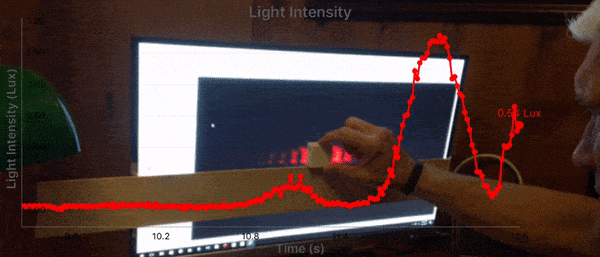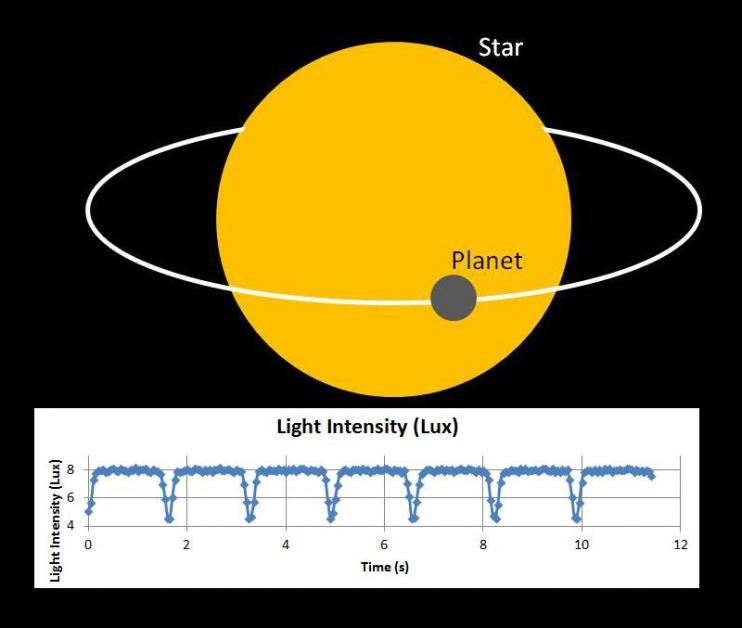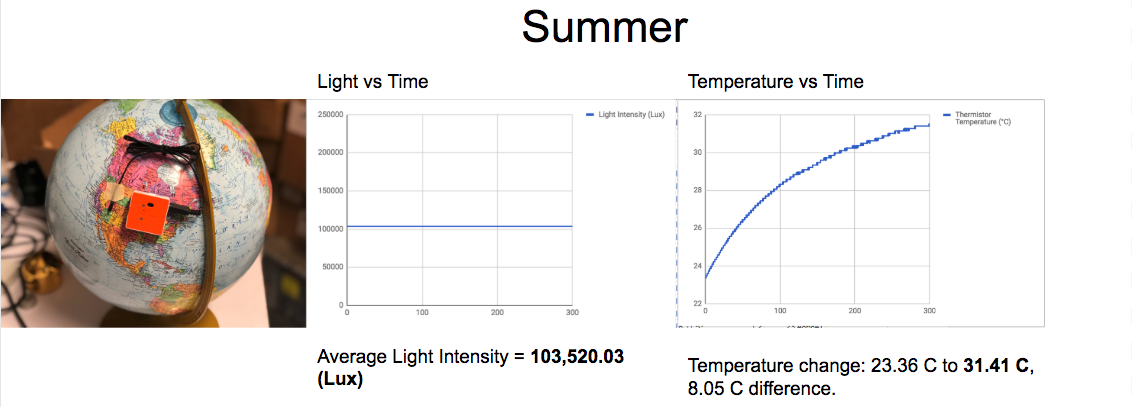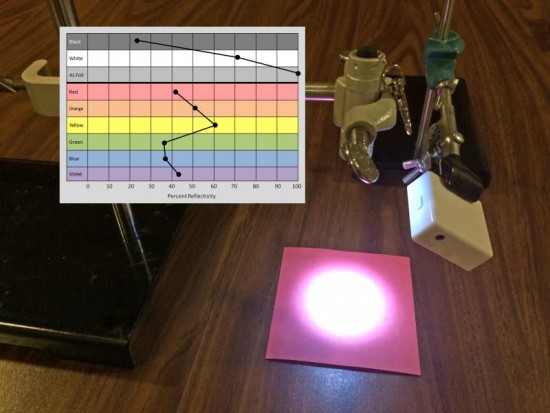Explore with the PocketLab Light Sensor
Use the PocketLab Light Sensor in your Classroom
Our community site is full of interesting and creative ways to use the PocketLab Voyager or PocketLab Weather light sensor. Check out a few of them below to spark some ideas!
1) A Study of Reflectivity
This experiment for studying the reflectivity of different colored surfaces makes use of the PocketLab Voyager or Weather light sensor, a flashlight, colored construction paper, and aluminum foil (see image above). Written by Dr. Richard Born. Click here for the complete lesson.
2) Double Slit Diffraction Interference & the Wavelength of Light

A classic way to demonstrate the wave nature of light is to pass a beam of light from a laser through a double slit. In this lesson, students study the intensity of light in the resultant interference pattern using the light intensity sensor of PocketLab Voyager or Weather. Written by Dr. Richard Born. Click here for the complete lesson.
3) How to Discover an Exoplanet

Over the past twenty years, scientists have discovered hundreds of exoplanets, planets that orbit stars outside our solar system. Using a PocketLab Voyager or Weather, students can model the discovery of an exoplanet using the transit method, a common method of exoplanet discovery. Written by Dr. Richard Born. Click here for the complete lesson.
4) What Causes the Seasons?

Using a globe, a lamp, and the PocketLab Voyager or Weather light sensor and attachable temperature probe, students can model changing weather during different seasons. Students will investigate the cause of the seasons and refute common misconceptions about it. This lesson is ideal for Earth science in upper elementary and middle school grades. Click here for the complete lesson.
Using the PocketLab Light Sensor with Scratch
1) PocketLab Light Sensor Drives a Scratch Program of the Eye

The eye is one of the marvels of the human body. The colored iris of the eye, surrounding the pupil, acts as a diaphragm to keep the amount of light entering the eye fairly constant. In this lesson, you will use the PocketLab Voyager or Weather light sensor and Scratch to model the behavior of the eye's iris. You will design a Scratch program that takes in the light intensity data from the PocketLab which will then either expand or contract an on-screen iris. Written by Dr. Richard Born. Click here for the complete activity.
2) True Random Numbers in Scratch
We can create a way to make true random numbers in Scratch using the PocketLab Voyager or Weather light sensor and a lava lamp. Sound crazy? There is actually a US patent on such a system! It turns out that on their own, computers are not good at generating random numbers, therefore to make true random numbers using a computer you need an external source of randomness. Click here for the complete activity.


